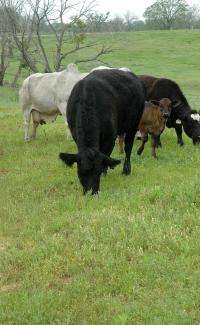Use caution when thinking about restocking after drought

Experts with the Texas AgriLife Extension Service are advising beef cattle producers to use caution and strategic planning when thinking about restocking herds after drought.
Though rainfall has been received throughout the eastern portion of the state and promoted growth of forages on pastures, cattle producers need to be careful when evaluating their operations.
“I think so far people are being really cautious,” said Dr. David Anderson, AgriLife Extension livestock economist. “I think producers are waiting to see if this rain is going to last. They should be asking themselves questions like ‘How long is it going to take for your pasture to recover?’ and ‘What is going to happen once we get into the summer?’”
Anderson said there are also financial constraints to consider, such as how much was spent feeding hay and other feedstuffs through the 2011 drought.
“There’s also sticker shock on how much it is going to cost to replace cattle,” he said.
Dr. Larry Redmon, AgriLife Extension state forage specialist, said producers should always consider the threat of drought.
“My take is people should be stocked for drought at all times,” Redmon said. “People can reduce the risk of potential drought and not have to worry about doing any buying and selling. If you have a good year, there are lots of ways to use that extra grass. You can’t feed your way out of a drought. You can easily spend more money (trying) than the operation can generate over several years.”
Redmon said in a good year ranchers who have extra grass can either bale it, graze it or lease it out for grazing.
“If you are completely destocked, stay out a year and let that pasture recover for a year before coming back in,” he said. “Overall, I just think it’s a little too soon to start restocking. I think producers need to be very cautious; remember, more is not always better.”
Anderson said from an economic standpoint, ranchers who decide to rebuild need a plan.
“They need to think seriously about stocking rates and have some sort of plan,” he said. “Another thing they need to be looking at carefully is how much you fed last year and what feedstuffs you already have.”
“I would just be real cautious about loading up on cattle and restocking,” Redmon said.
More information: AgriLife Extension is offering educational programs on cattle herd rebuilding. Visit agriliferegister.tamu.edu and enter the keyword Beef.
Provided by Texas A&M AgriLife


















